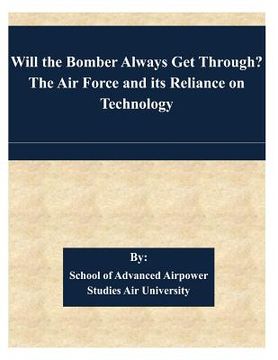Will the Bomber Always Get Through? The Air Force and its Reliance on Technology (in English)
Synopsis "Will the Bomber Always Get Through? The Air Force and its Reliance on Technology (in English)"
This study analyses the inherent dangers of relying too heavily, or solely, on one panacea technology to prosecute war strategy at the expense of other, essential capabilities. The historically sound pillars of military success (the sword, the shield, and the support) have given victory to those who have used all three in a balanced, synergistic manner. When, due to over-reliance on a single technology, one of these pillars is relegated to a lesser status, or when one is marginalized, the pendulum of the advantage may swing to the enemy, or the enemy may successfully force a pendulum swing to his advantage. Before and during World War II, the Air Corps' (and then Army Air Forces') unescorted, high-altitude, daylight precision bombing doctrine relied heavily on the B-17 weapons system to prosecute the industrial web strategy. This over-reliance on the B-17 weapons system technology slighted the shield pillar (long-range fighter escort) with devastating results as Germany was able to swing the pendulum of advantage in its favor. The post-World War II era witnessed heavy reliance on the technology of nuclear weapons. This reliance resulted in a weakening of not only the shield pillar but also the conventional sword. Hence, when the Vietnam War began, the Air Force was ill prepared to engage in non-nuclear conflict as North Vietnam was able to swing the pendulum of advantage in its favor. In 1989, the Air Force began using its newest technologically superior weapon - stealth. Used in three conflicts between 1989 and 1999, Air Force doctrinal thinking evolved from using the new weapon in solitude to packaging the weapon with other assets, thus balancing the pillars. While the F-117 shootdown over Serbia was a black eye for the USAF, it was not, in fact, due to over-reliance on the new technology. Global Strike Task Force, the latest attempt at doctrinal evolution, has at its core technological superiority vis-à-vis stealth, intelligence gathering, and horizontal integration of ISR, space, and strike assets. While it does not rely too heavily on one panacea technology, it may, in fact, marginalize one of the essential pillars of success. Unless the concept is carefully scrutinized, the ability to properly create its future force structure may, again, catch the Air Force ill prepared for a fight it did not envision.

